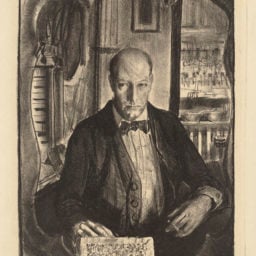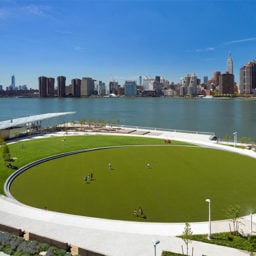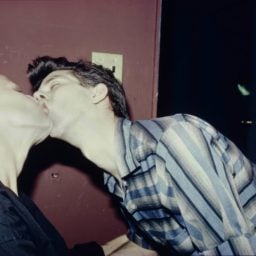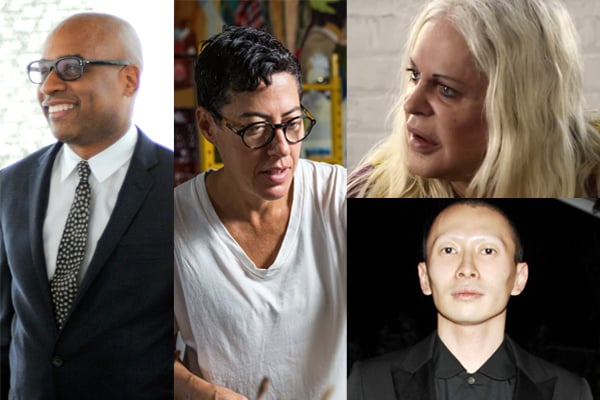

This weekend marks the 46th anniversary of New York City Pride, which commemorates the riots at the Stonewall Inn on June 28, 1969. If the artists in our current selection of exhibitions demonstrate anything, it’s that queer bodies have existed in different forms and responded to different conditions throughout history.
Given the breadth of the queer experience, the task of compiling exhibitions that represent the full spectrum is no small order. To quote artnet News’s Kathleen Massara, who expertly put together our roundup last year: “It’s tough to create a list of contemporary queer artist shows, for one, because the list is so long, and two, competition is so fierce.”
During Pride Month, we offer 16 queer artists who are pushing the conversation forward, despite the obstacles.
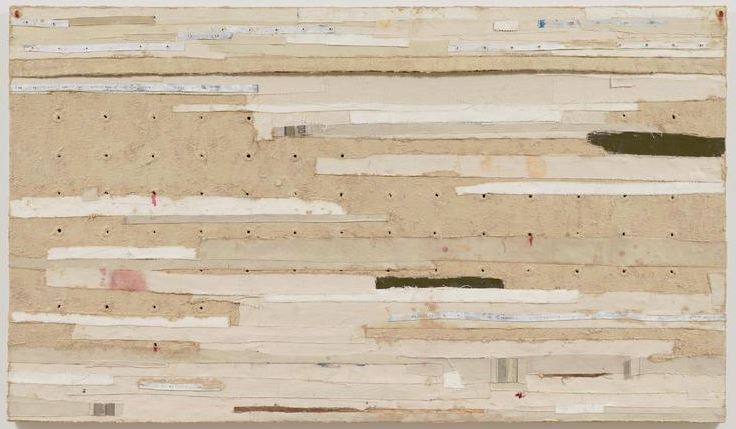
Harmony Hammond, Bandaged Grid #1 (2015). Courtesy of the artist via Alexander Gray Associates.
1. Harmony Hammond, “Solo Exhibition“
Works on paper, paintings, and monotypes, all drawn from Harmony Hammond’s recent body of work, are on view at Alexander Gray Associates’ space in Chelsea. Hammond, who helped found New York City’s feminist movement in the early 1970s, has long engaged with the male-dominated world of Modernist painting, offering what she once described as “overtly lesbian” content.
“Since then,” Hammond explained to Carlos Motta in contemporary queer archive We Who Feel Differently, “I have continued making work, writing, teaching, lecturing and contributing to various feminist, lesbian, and queer art projects over the years.”
WHERE: Alexander Gray Associates, New York
WHEN: Through June 25, 2016
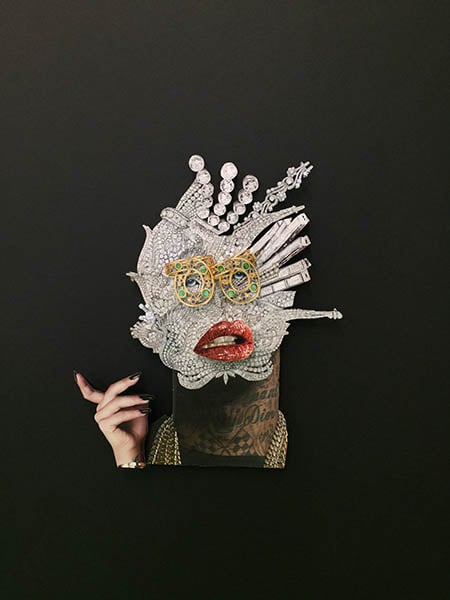
Rashaad Newsome, Stop Playing in My Face!. Image: Courtesy of De Buck Gallery.
2. Rashaad Newsome, “Stop Playing in My Face!“
In content and style, Rashaad Newsome’s exhibition at De Buck Gallery in Chelsea offers itself as a complementary companion to the artist’s Studio Museum show, “This Is What I Want to See,” which runs through June 26. Newsome describes his amorphous collages of distinctly human faces as evolutionary extensions of “abstracted Baroque-esque designs,” taking their cue from the elaborate works of old Dutch masters and the compositional feats of Dadaist pioneers like Hannah Höch.
The ornate portraits at the gallery, along with his video-works of Vogue dancers and video vixens on view at the Studio Museum, are complicated, albeit affectionate, testimonies to the queer sub-cultures that exist within broader black communities. As Newsome told Complex in a 2014 interview: “I don’t create work that is present in a gaze of how society sees me. I present how I see myself and how my community sees itself. And you can either get in or not get in.”
WHERE: De Buck Gallery, New York
WHEN: Through June 25
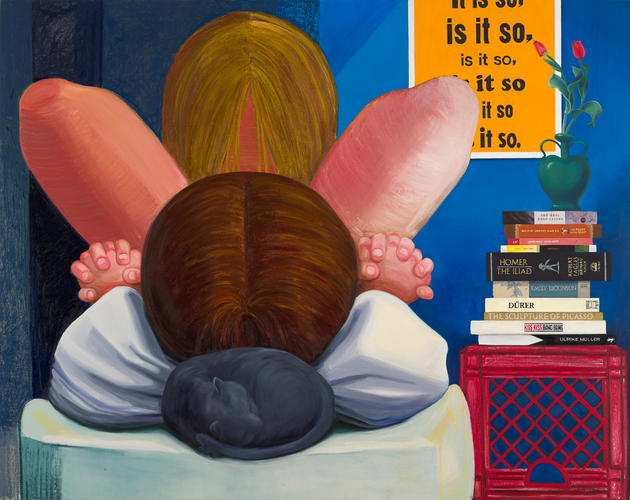
Nicole Eisenman, It is so, (2014). Image: Courtesy of the artist and Susanne Vielmetter Los Angeles Projects.
3. Nicole Eisenman, “Al-ugh-ories”
Readings of Nicole Eisenman’s paintings at the New Museum, her first major institutional survey, run the gamut from comical to grim. Arguably, it is precisely in this in-between space that makes her work so spellbinding. After all, the task of bringing women’s issues to the fore in a violently hyper-patriarchal world is bound to get thorny, so why not poke some fun?
In both her life and work, Eisenman doesn’t flinch from paradoxical dilemmas—and she’s not afraid to address her own privileges, to boot. “I have a problem with the fact that the world feels like it’s on fire and we’re all going to hell in a hand basket,” she said in a recent conversation with Grace Dunham for the New York Times. “You have to acknowledge your own privilege. Otherwise you’re walking around with a blindfold on.”
WHERE: New Museum, New York
WHEN: Through June 26, 2016
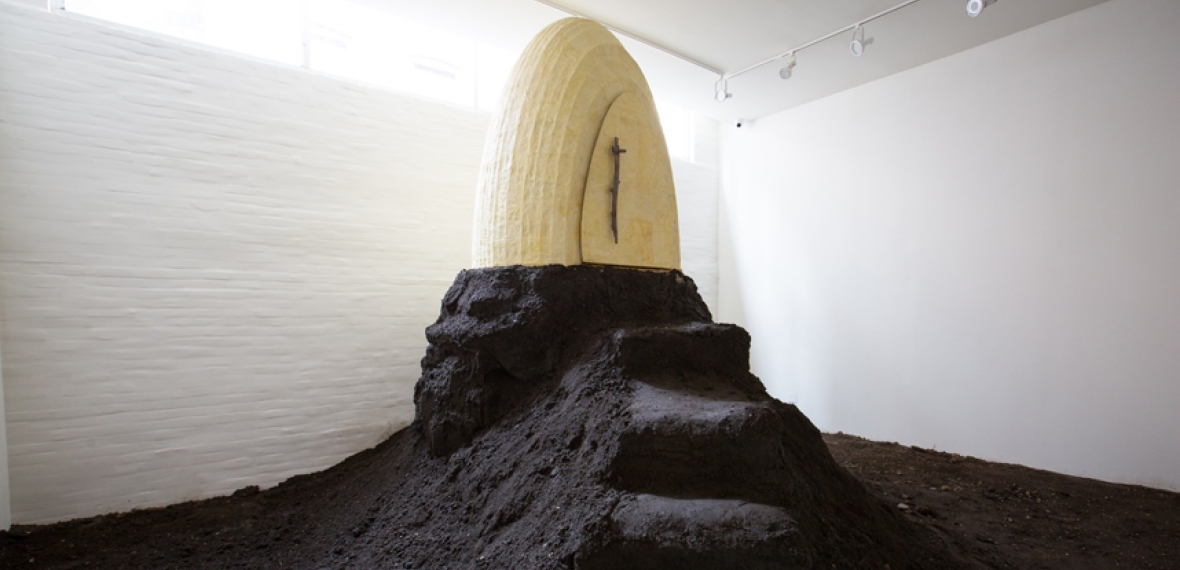
Terence Koh, bee chapel (2016). Image: Courtesy of Andrew Edlin Gallery.
4. Terence Koh, “Bee Chapel”
Terence Koh emerged from his self-imposed retirement earlier this year, and his return from the mountains of upstate New York yielded “Bee Chapel.” His exhibition, which takes over Andrew Edlin’s new gallery space in the Lower East Side, offers up a curious mix of sculptures, works on paper, and, of course, the imposing bee chapel installation.
As Kevin McGarry noted in his review for the New York Times, Koh, once the art world’s “enfant terrible,” has since changed his tune, advancing “ecological” concerns—namely the dwindling bee population and its environmental impact. And just this month, Koh paid a special tribute to the victims of the Orlando shooting by broadcasting their names into outer space.
WHERE: Andrew Edlin Gallery, New York
WHEN: Through July 1, 2016
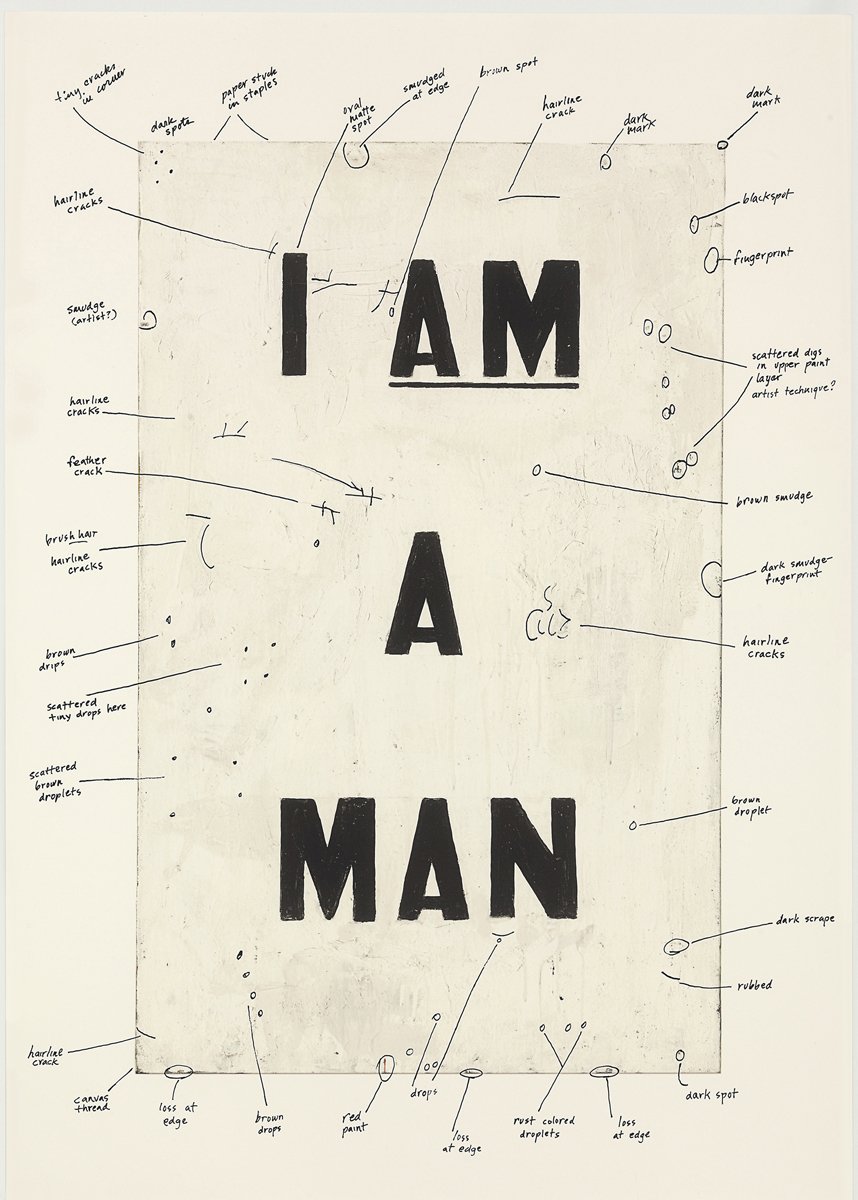
Glenn Ligon, Untitled (I Am a Man) (1988). Courtesy of Leslie-Lohman Museum of Gay and Lesbian Art.
5. Glenn Ligon and others, “A Deeper Dive”
The AIDS crisis that ravaged America in the 1980s and beyond, comprise the psychic material in “A Deeper Dive,” a special group exhibition hosted by the Leslie-Lohman Museum of Gay and Lesbian Art. Foremost in the show is artist Glenn Ligon, whose body of work has consistently addressed issues of sexuality, race, and the painful memories indelibly enmeshed in his memories of the epidemic.
In a statement to artnet News, the museum’s director, Hunter O’Hanian, describes this project as highlighting an “amazing period in gay history.” He added: “It was informed by the sexual revolution, anti-war efforts, and the civil rights movement which fermented in the 1960s. It was the awakening of a new period of enlightenment in human and social development. In June 2016, these lessons could not be more relevant.”
WHERE: Leslie-Lohman Museum of Gay and Lesbian Art, New York
WHEN: July 15 through September 25, 2016
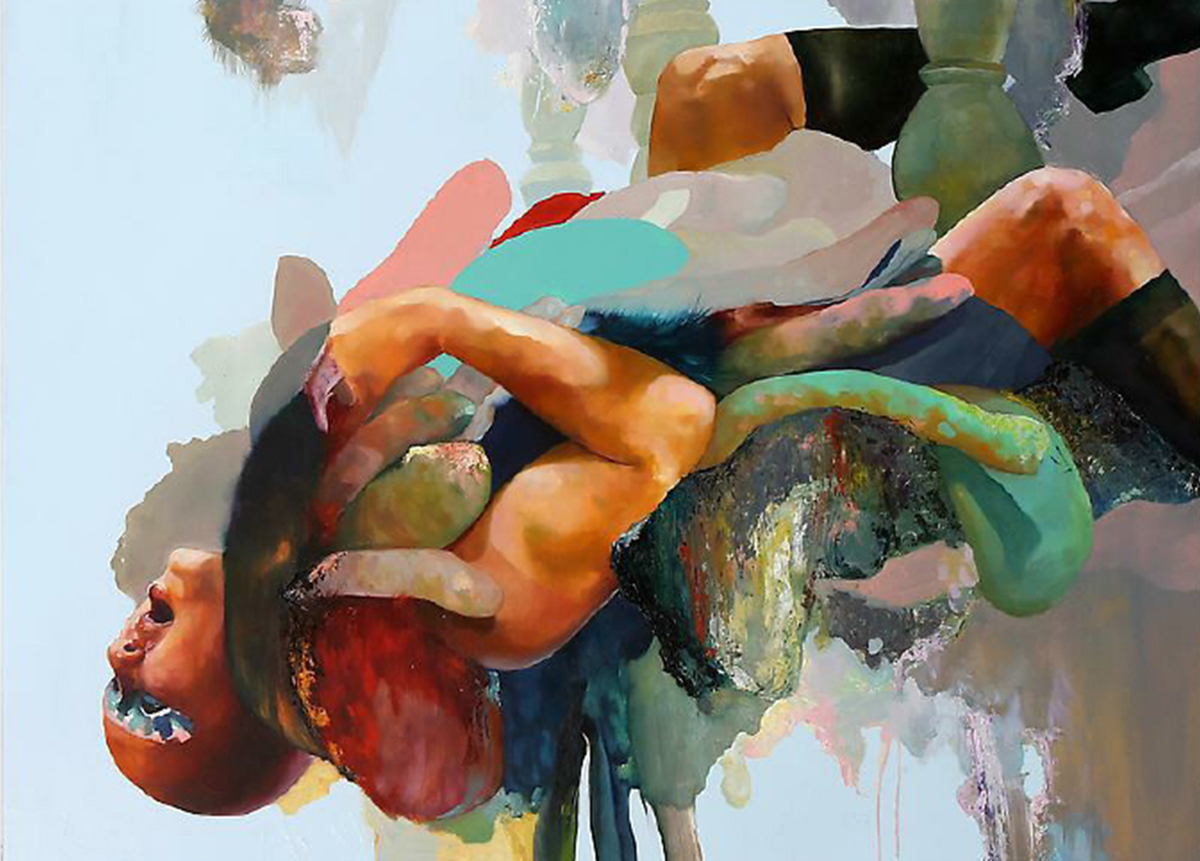
David Antonio Cruz, bybeingcarefulofthecompanyyoukeep (detail) (2016). Courtesy of the artist.
6. David Antonio Cruz and others, “Look up here, I’m in heaven”
The orgranizers of BRIC’s forthcoming exhibition, “Look up here, I’m in heaven,” are well-aware that racial discrimination continues to haunt artists of color, but curators Elizabeth Ferrer and Jenny Gerow have nonetheless asked the artists in the show to aim their arrows a little higher. Featuring works by David Antonio Cruz, Yashua Klos, Tschabalala Self, and Yoon Ji Seon, the show tackles hard truths with optimistic bravado.
Cruz, who recently mounted a solo exhibition at the Gateway Project Spaces, has long mined issues related to his identifyung as a gender-fluid gay Latino man. “At the time, I was coming out,” Cruz told art critic Lee Ann Norman in a 2013 interview for BOMB Magazine, “I was coming to terms with how I saw myself. I started thinking about my relationship with my father. The work was tough, intense. I was making these self-portraits that a professor described as car crashes.”
WHERE: BRIC, New York
WHEN: Through August 14, 2016
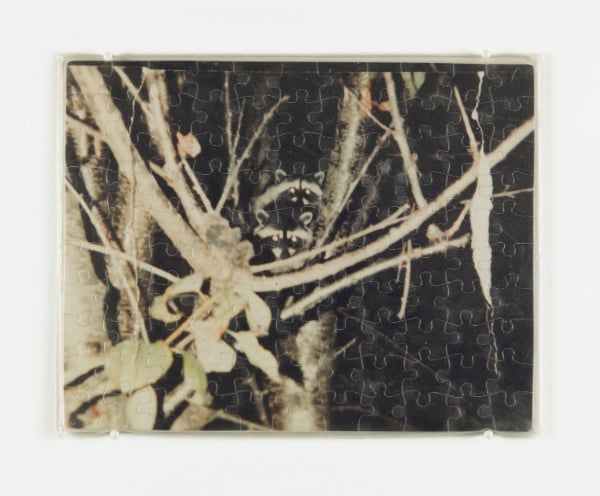
Felix Gonzalez-Torres, “Untitled” (Wawannaisa) (1991). © The Felix Gonzalez-Torres Foundation. Image: Courtesy of Andrea Rosen Gallery, New York.
7. Felix Gonzalez-Torres, “Untitled”
That conceptual artist Felix Gonzalez-Torres preferred to keep his art open for interpretation, a refrain that many who survived his death maintain, shouldn’t deter us from remembering his life. With three simultaneous shows in New York, London, and Milan, we’d be remiss to forget Gonzalez-Torres’s own celebratory history of love—namely for Ross Laycock, who would serve as a muse in one of his jigsaw works and the inspiration behind his widely-acclaimed candy-work.
As Andrea Rosen told artnet News in an interview last month: “One of the things Felix said most often is that ‘the only thing that’s permanent is change. At the core of Felix’s work is this innate idea that because something existed, it will always exist.”
WHERE: Hauser & Wirth, London
WHEN: Through July 30, 2016
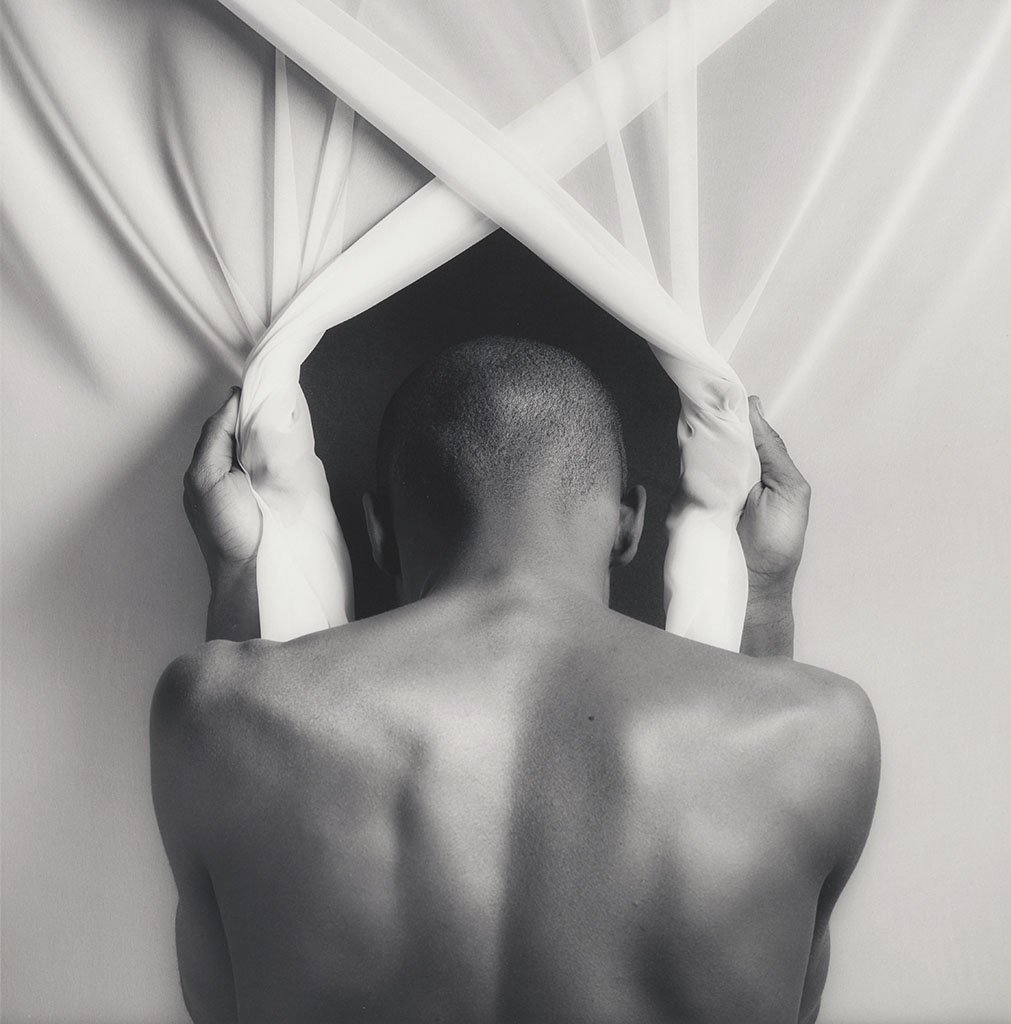
Robert Mapplethorpe, Phillip Prioleau (1982), gelatin silver print. Promised gift of The Robert Mapplethorpe Foundation to the J. Paul Getty Trust and the Los Angeles County Museum of Art. © Robert Mapplethorpe Foundation.
8. Robert Mapplethorpe, “The Perfect Medium“
With a forthcoming television series, a biopic on the horizon, and a recent HBO documentary not far in our rear-view mirror, Robert Mapplethorpe’s legacy is experiencing a well-deserved revival. To build the interest around his legacy, the Los Angeles County Museum of Art and the Getty Museum have produced twin exhibitions showcasing the photographer’s work.
The shows, which offer up his photographs of everything from New York’s underground BDSM scene to flowers (courtesy of his foundation), cast a desperately-needed light on remembering the AIDS crisis, the culture wars of the late 1980s and 1990s, and the very real legal discriminations that punished queer bodies at-large.
WHERE: Los Angeles County Museum of Art, Los Angeles
WHEN: Through July 31, 2016
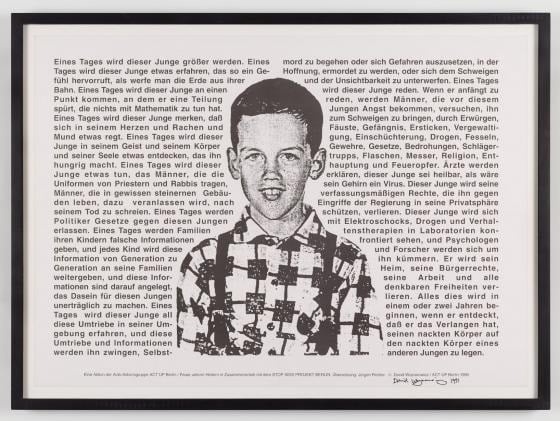
David Wojnarowicz, Untitled (One Day this Kid… (1990–1991). Courtesy of P.P.O.W.
9. David Wojnarowicz, “Raging through Time”
A small selection of David Wojnarowicz’s works are currently on view in an intimate, three-part exhibition at Rutgers University’s Zimmerli Art Museum. According to a statement from the museum, the show traverses the length of the artist’s career in chronological order, starting with his photographic explorations of nature and mythology and ending with his prints at the height of the AIDS epidemic.
Wojnarowicz’s monumental role in the culture wars of the late 1980s and 1990s positioned him in staunch opposition to conservative politicians like Jesse Helms. His sizeable body of mixed-media work will be the subject of a major retrospective at the Whitney Museum in 2018.
WHERE: Zimmerli Art Museum, Rutgers – New Brunswick
WHEN: Through July 31, 2016

Genesis Breyer P-Orridge. Installation view. Courtesy of the artist.
10. Genesis Breyer P-Orridge, “Try to Altar Everything”
Devotion lies at the heart of Genesis Breyer P-Orridge’s interactive exhibition at the Rubin Museum of Art. For nearly half a century, P-Orrdige, who identifies as third gender, has successfully eschewed classifications regarding identity and style. And his/her offerings in “Try to Altar Everything,” which range from sculptures to paintings and loaned objects, is an homage to the fluidity in Nepali traditions that he/she deeply resonates with.
Guests to the show are invited to participate in his/her special project. Interested parties may bring offerings with sentimental value to the admissions desk, after which P-Orridge will place the objects in an installation he/she will continuously rearrange during the duration of his/her exhibition.
WHERE: Rubin Museum of Art, New York
WHEN: Through August 1, 2016
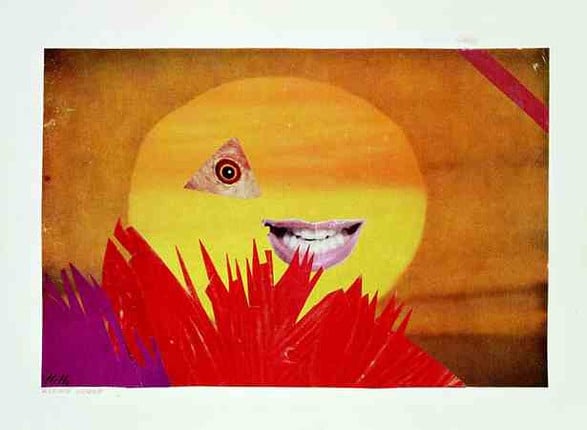
Hannah Höch, Kleine Sonne (Little sun) (1969).© Berliner Sparkasse / VG Bild-Kunst, Bonn 2016.
11. Hannah Höch, “A Revolutionary Woman”
It’s hard to imagine a more fitting title than “A Revolutionary Woman” for a full-scale survey of Dadaist master Hannah Höch. The German artist, who forged her own way amid intense competition from fellow male artists, stands as one of the most influential artists to date. The intrepid artist was a pioneer in photomontage, a method that uses actual photographs in the process of collaging.
Höch used the technique to spectacular effect in critiquing the social structures of her time. “They continued for a long time to look on us women artists as charming and gifted amateurs, denying us any real professional status,” Hoch wrote, adding: “Thirty years ago it wasn’t easy for a woman to impose herself as a modern artist in Germany.”
WHERE: Kunsthalle Mannheim, Mannheim
WHEN: Through August 14, 2016
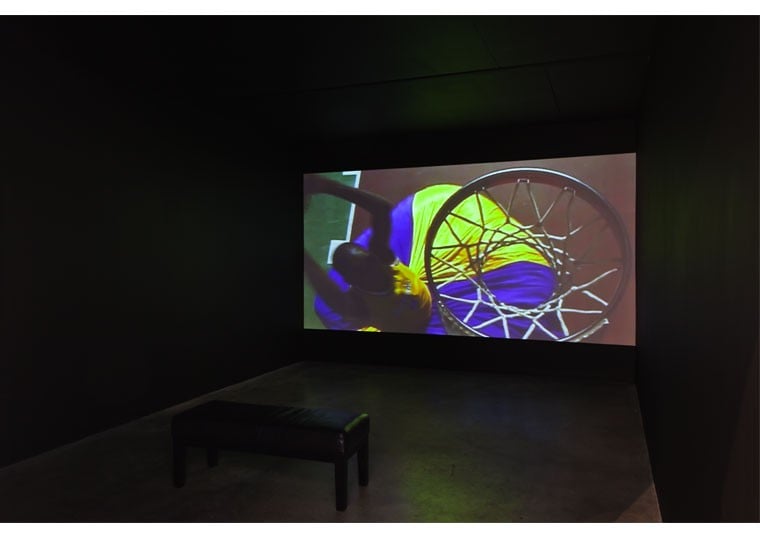
Mark Bradford, installation view. Courtesy of the artist via CAM.
12. Mark Bradford, “Receive Calls on Your Cell Phone from Jail”
Mark Bradford takes aim at America’s social justice system in an exhibition at the Contemporary Art Museum, St. Louis. With his signature, cartographic approach to abstract painting, Bradford articulates the difficulty that individuals and their incarcerated loved ones encounter in attempting cellular communication. Drawing from an interview with Hyperallergic last year, this project belongs to the artist’s broader project of engaging with institutional and systemic abuses.
Ahead of his takeover of the American pavilion at the Venice Biennale next year, Bradford will be mounting dual shows at the Denver Art Museum and the Clyfford Still Museum.
WHERE: Contemporary Art Museum, St. Louis
WHEN: Through August 21, 2016
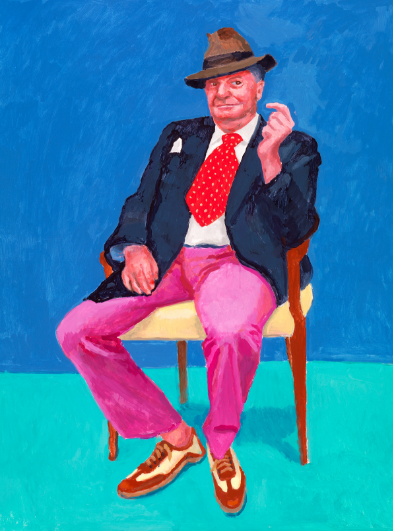
David Hockney RA, Barry Humphries (2015). Courtesy of the artist via Richard Schmidt for RA.
13. David Hockney, “82 Portraits and 1 Still-Life”
Artist John Baldessari, gallery king Larry Gagosian, and others in David Hockney’s colorful life appear in the British artist’s new series of paintings, “82 Portraits and 1 Still-life,” at the Royal Academy of Arts. Fans of Hockney’s homoerotic poolside paintings—which act as visual records of his sunny youth in 1960s Los Angeles—will be happy to learn that the esteemed painter dipped back into his vibrant palette to conjure these new works.
His exhibition at the Royal Academy of Art, which opens next week on July 2, isn’t the only show on Hockney’s horizon. Next February, Tate Modern is slated to mount a full-scale survey, which spans six decades-worth of work and tracks his artistic evolution over the years. Those hoping to brush up on their history about the artist ahead of his shows might want to consider watching Hockney, a recent feature-length BBC documentary that artnet News’s own Sarah Cascone described as “compelling cinema.”
WHERE: Royal Academy of Arts, London
WHEN: Through October 2, 2016
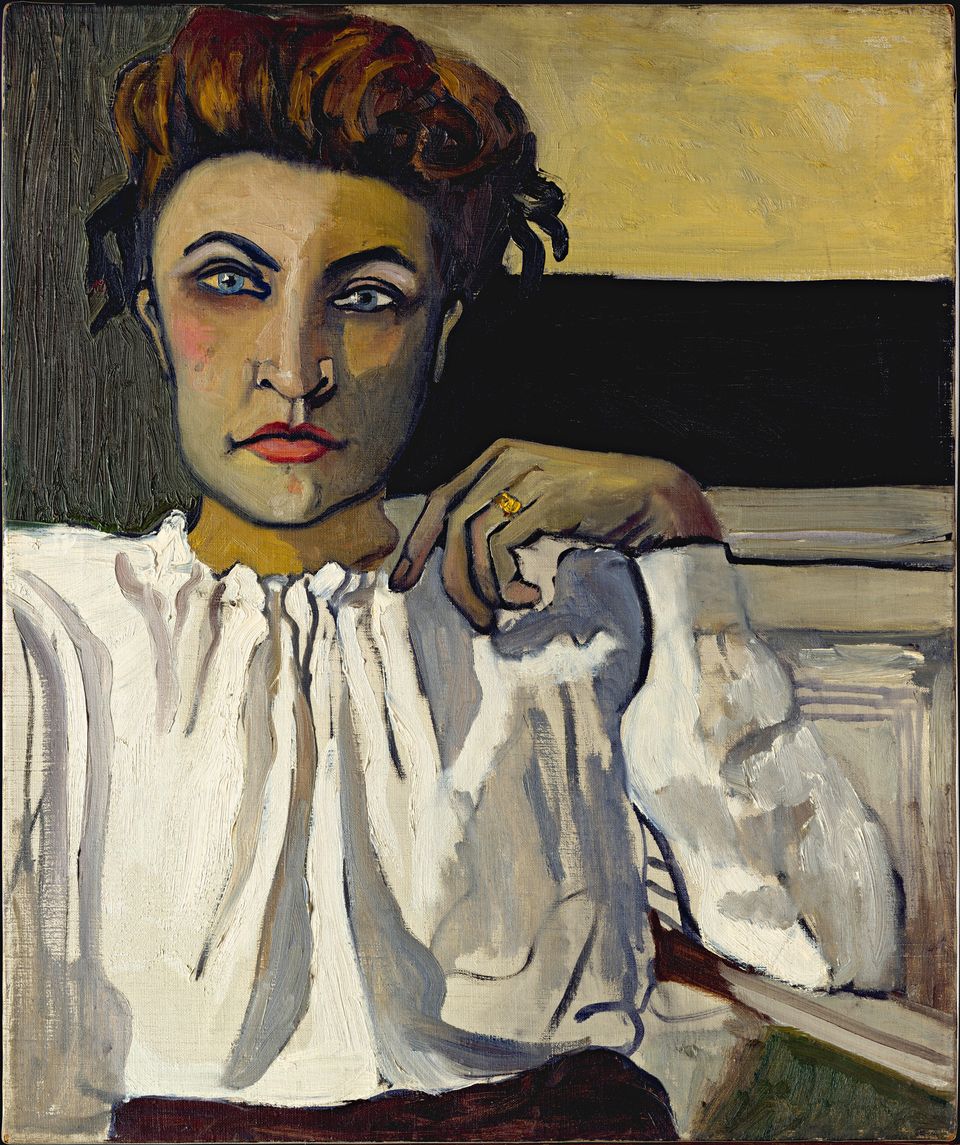
Alice Neel: Elenka (1936). Courtesy of the Metropolitan Museum of Art / Art Resource / Scala, Florence 2015 © Estate of Alice Neel.
14. Alice Neel, “Painter of Modern Life”
Born at the turn of the 20th century, Alice Neel’s approach to portraiture, particularly of women, has earned her accolades and praise as an early pioneer of feminist painting. At the Ateneum Art Museum in Helsinki, Finland, a major survey of the late artist’s contributions to the practice is on view. It’s worth noting that while Neel did not expressly depict same-sex desires among women, her frank portraits of female forms advanced what she characterized as “realistic” accounts of women’s bodies.
“Neel [did not] provide any verbal commentary on the increasingly visible efforts of lesbian women artists,” Pamela Allara writes in her biography on the artist. She continued: “This absence may in part be explained by the fact that what one might term a lesbian sensibility in contemporary art did not emerge until the very end of Neel’s life.”
WHERE: Ateneum Art Museum, Helsinki
WHEN: Through October 2, 2016
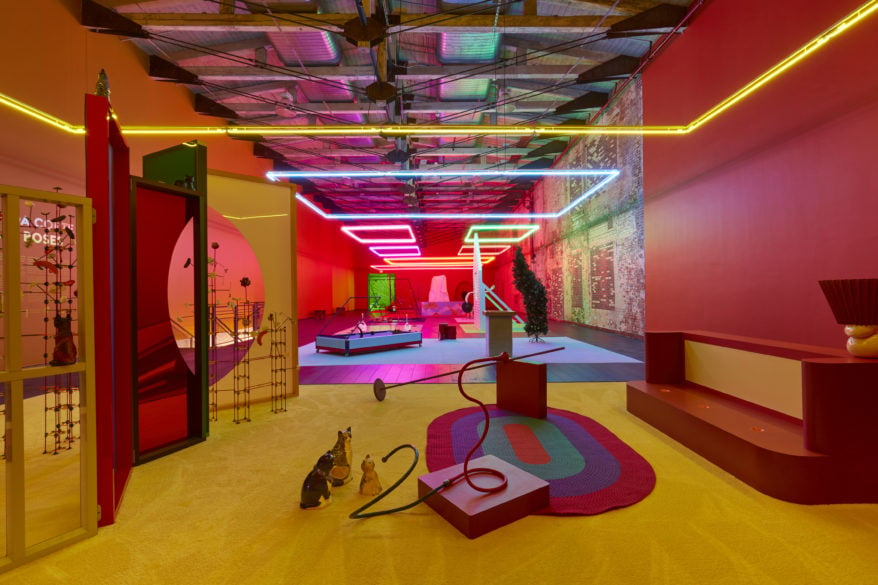
Alex Da Corte, Installation view of Free Roses (2016). Courtesy of the artist via MASS MoCA.
15. Alex Da Corte, “Free Roses”
Breakout star Alex Da Corte has been the subject of much art world interest in recent years. In “Free Flowers,” his first major institutional show (and his largest one to date), the Philadelphia native offers an immersive installation replete with jarring neon lights, hallucinatory structures, and an arrangement of what MASS MoCA describes as “banal, off-brand items.”
In an interview with Randy Kennedy for the New York Times, Da Corte revealed that much of his work grapples with the “rules that we have for what is beauty or what is optimism.”
WHERE: MASS MoCA
WHEN: Through January 2017
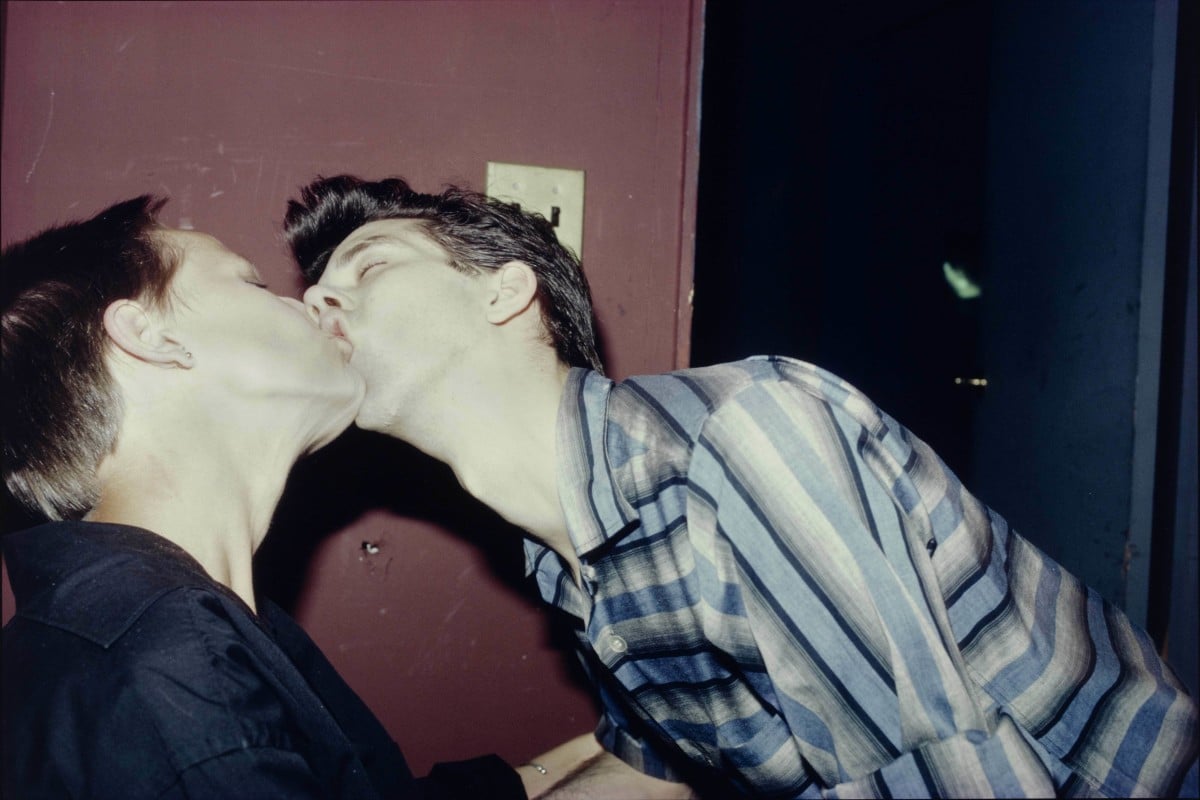
The Museum of Modern Art, New York. Purchase. © 2016 Nan Goldin.
16. Nan Goldin, “The Ballad of Sexual Dependency”
Some 700 images drawn from Nan Goldin’s archive make their way into the Museum of Modern Art’s new exhibition of her work, “The Ballad of Sexual Dependency.” In a slideshow of photographs depicting the precarious underground culture of 1980s New York, this iteration of Goldin’s presentation is a remarkable tribute to the queer lives of her youth.
To borrow from art critic Christian Viveros-Fauné‘s review: “Goldin’s Ballad of Sexual Dependency is a record of loss that, like Puccini’s “La Bohème,” contains its own partial redemption. A mix of beauty, horror, and despair, her images also reveal a lust for life rare not just in art, but in living. A better memorial does not exist for alternative scenes anywhere—from New York’s faded downtown to today’s battered but unbeaten gay Orlando.”
WHERE: Museum of Modern Art, New York
WHEN: Through February 12, 2017

